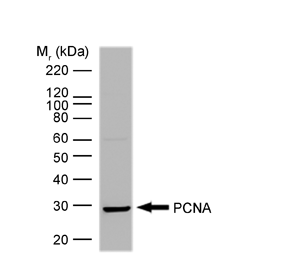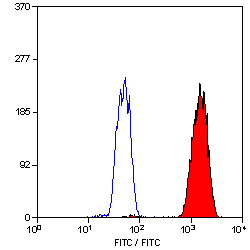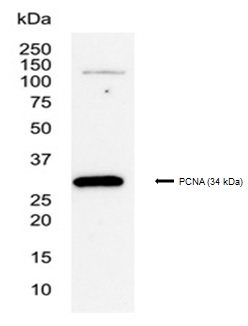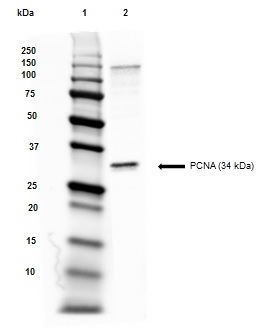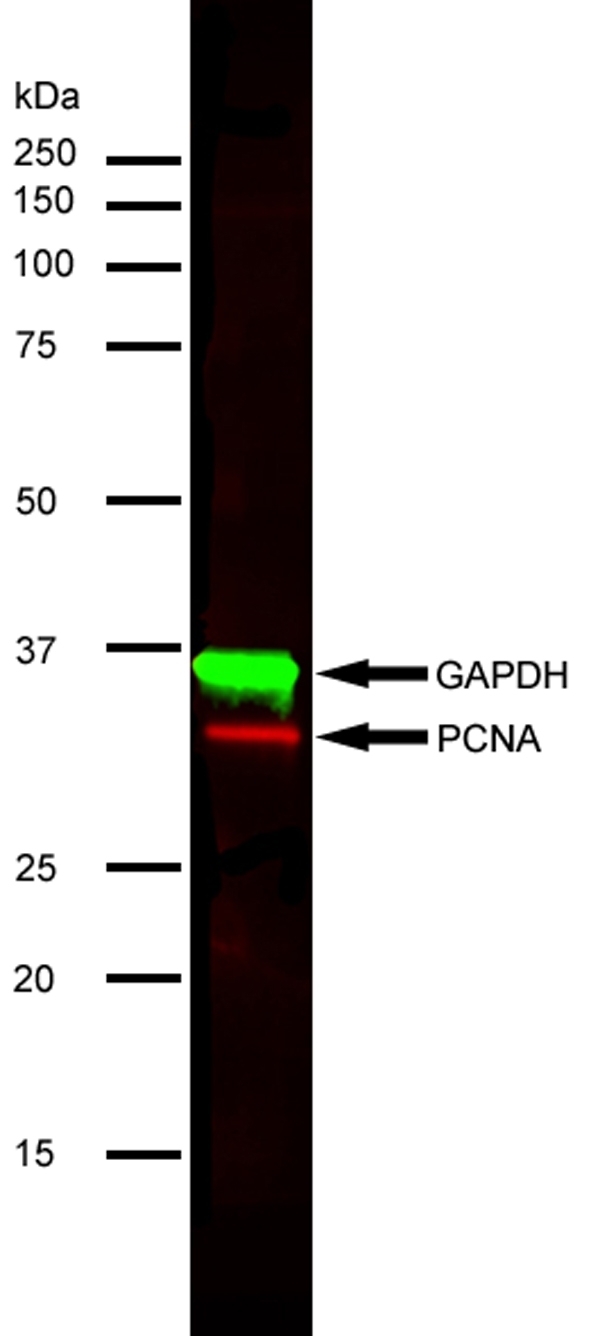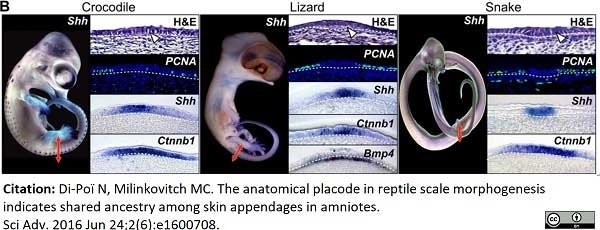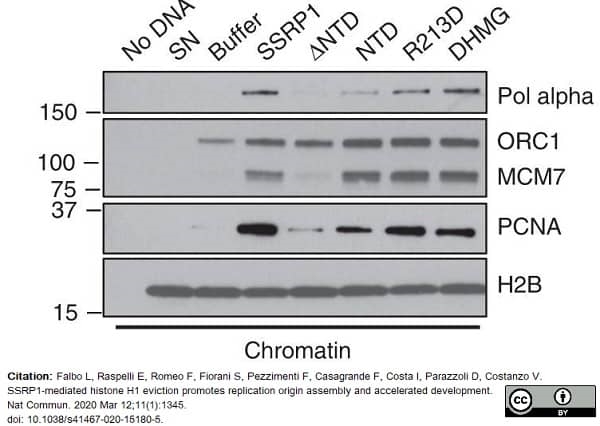PCNA antibody | PC10







Mouse anti PCNA
- Product Type
- Monoclonal Antibody
- Clone
- PC10
- Isotype
- IgG2a
- Specificity
- PCNA
| Mouse anti PCNA antibody, clone PC10 recognizes the proliferating cell nuclear antigen, also known as PCNA or cyclin. PCNA is a 261 amino acid ~28 kDa nuclear protein vital for cellular DNA synthesis at the replication fork (Li et al. 1995) through its interaction with FEN1 (Wu et al. 1996). PCNA is the auxilliary protein for DNA polymerase δ (Bravo et al. 1987). PCNA is highly conserved between mammalian species and other vertebrates. Mouse anti PCNA antibody, clone PC10 has been used for the detection of PCNA in a number of species including human, rat, mouse (Park et al. 2008), chicken (Franz-Odendaal 2008) and abalone (Harris et al. 2006). |
- Target Species
- Rat
- Species Cross-Reactivity
-
Target Species Cross Reactivity Vertebrates Expected from Sequence Invertebrates Expected from Sequence Ferret Chicken Rabbit Xenopus Mouse Horse Sheep Dog Cat Cynomolgus monkey Rhesus Monkey Hamster Atlantic Salmon Human Bearded Dragon Corn Snake Nile Crocodile - N.B. Antibody reactivity and working conditions may vary between species.
- Product Form
- Purified IgG - liquid
- Preparation
- Antibody purified from tissue culture supernatant
- Buffer Solution
- Phosphate buffered saline
- Preservative Stabilisers
- 0.09% sodium azide (NaN3)
- Carrier Free
- Yes
- Immunogen
- Rat PCNA made in the protein A expression vector pR1T2T
- Approx. Protein Concentrations
- IgG concentration 1.0 mg/ml
- Regulatory
- For research purposes only
- Guarantee
- 12 months from date of despatch
Avoid repeated freezing and thawing as this may denature the antibody. Storage in frost-free freezers is not recommended.
| Application Name | Verified | Min Dilution | Max Dilution |
|---|---|---|---|
| Flow Cytometry 1 | 1/100 | ||
| Immunohistology - Frozen | |||
| Immunohistology - Paraffin | 1/50 | 1/100 | |
| Immunoprecipitation | |||
| Western Blotting | 1/1000 |
- 1 Membrane permeabilization is required for this application. The use of Leucoperm (Product Code BUF09) is recommended for this purpose.
- Flow Cytometry
- Use 10μl of the suggested working dilution to label 1x106 cells in 100μl
- Histology Positive Control Tissue
- Tonsil
| Description | Product Code | Applications | Pack Size | List Price | Your Price | Quantity | |
|---|---|---|---|---|---|---|---|
| Mouse IgG2a Negative Control | MCA1210 | F | 100 Tests |
|
Log in | ||
| List Price | Your Price | ||||||
|
|
Log in | ||||||
| Description | Mouse IgG2a Negative Control | ||||||
References for PCNA antibody
-
Waseem, N.H. & Lane, D.P. (1990) Monoclonal antibody analysis of the proliferating cell nuclear antigen (PCNA). Structural conservation and the detection of a nucleolar form.
J Cell Sci. 96 ( Pt 1): 121-9. -
Landberg, G. et al. (1990) Flow cytometric multiparameter analysis of proliferating cell nuclear antigen/cyclin and Ki-67 antigen: a new view of the cell cycle.
Exp Cell Res. 187 (1): 111-8. -
Wilson, G.D. et al. (1992) Flow cytometric characterisation of proliferating cell nuclear antigen using the monoclonal antibody PC10.
Eur J Cancer. 28A (12): 2010-7. -
Jenkins, H. et al. (1993) Nuclei that lack a lamina accumulate karyophilic proteins and assemble a nuclear matrix.
J Cell Sci. 106: 275-85. -
Prosperi, E. et al. (1993) Proliferating cell nuclear antigen complex formation induced by ultraviolet irradiation in human quiescent fibroblasts as detected by immunostaining and flow cytometry.
Exp Cell Res. 205 (2): 320-5. -
Elsässer, H.P. et al. (1994) Growth of rat pancreatic acinar cells quantitated with a monoclonal antibody against the proliferating cell nuclear antigen.
Cell Tissue Res. 276 (3): 603-9. -
Buggins, A.G. et al. (2001) Microenvironment produced by acute myeloid leukemia cells prevents T cell activation and proliferation by inhibition of NF-kappaB, c-Myc, and pRb pathways.
J Immunol. 167: 6021-30. -
Fenton, M. et al. (2001) Cellular senescence after single and repeated balloon catheter denudations of rabbit carotid arteries.
Arterioscler Thromb Vasc Biol. 21: 220-6.
View The Latest Product References
-
Harris, L. et al. (2006) Characterisation of cell types in abalone (Haliotis spp.) tissues using immunohistochemical techniques
Aquaculture 261: 1413-21 -
Park, J.H. et al. (2008) Gastric lesions and immune responses caused by long-term infection with Helicobacter heilmannii in C57BL/6 mice.
J Comp Pathol. 139: 208-17. -
Franz-Odendaal, T.A. (2008) Toward understanding the development of scleral ossicles in the chicken, Gallus gallus.
Dev Dyn. 237: 3240-51. -
Kapitonova, M.Y. et al. (2010) Immunohistochemical characteristics of the hypophysis in normal conditions and chronic stress.
Neurosci Behav Physiol. 40: 97-102. -
Hashimoto, Y. et al. (2010) Rad51 protects nascent DNA from Mre11-dependent degradation and promotes continuous DNA synthesis.
Nat Struct Mol Biol. 17: 1305-11. -
Izhak, L. et al. (2012) Dissecting the autocrine and paracrine roles of the CCR2-CCL2 axis in tumor survival and angiogenesis.
PLoS One. 7: e28305. -
Khlebnikov, V.V. et al. (2015) Developmental Characteristics of the Hypothalamo-Hypophyseal-Adrenal System in Chronic Heterotypical Stress
Neuroscience and Behavioral Physiology. 46 (1): 100-5. -
Guzera, M. et al. (2016) In Vitro Influence of Mycophenolic Acid on Selected Parameters of Stimulated Peripheral Canine Lymphocytes.
PLoS One. 11 (5): e0154429. -
Di-poï, N. & Milinkovitch, M.C. (2016) The anatomical placode in reptile scale morphogenesis indicates shared ancestry among skin appendages in amniotes.
Sci Adv. 2 (6): e1600708. -
Nakatsuka, M. & Kumabe, S (2018) Histological Alterations from Condyle Repositioning with Functional Appliances in Rats.
J Clin Pediatr Dent. 42 (5): 391-7. -
Falbo, L. et al. (2020) SSRP1-mediated histone H1 eviction promotes replication origin assembly and accelerated development.
Nat Commun. 11 (1): 1345. -
Kurdi, A. et al. (2019) Everolimus depletes plaque macrophages, abolishes intraplaque neovascularization and improves survival in mice with advanced atherosclerosis.
Vascul Pharmacol. 113: 70-6.
- Synonyms
- Proliferating Cell Nuclear Antigen
- RRID
- AB_324955
- UniProt
- P04961
- Entrez Gene
- Pcna
- GO Terms
- GO:0006260 DNA replication
- GO:0043626 PCNA complex
- GO:0006275 regulation of DNA replication
- GO:0007507 heart development
- GO:0046686 response to cadmium ion
- GO:0019985 translesion synthesis
- GO:0030337 DNA polymerase processivity factor activity
- GO:0032077 positive regulation of deoxyribonuclease activity
- GO:0033993 response to lipid
- View More GO Terms
- GO:0070557 PCNA-p21 complex
MCA1558
If you cannot find the batch/lot you are looking for please contact our technical support team for assistance.
Please Note: All Products are "FOR RESEARCH PURPOSES ONLY"
View all Anti-Rat ProductsAlways be the first to know.
When we launch new products and resources to help you achieve more in the lab.
Yes, sign me up